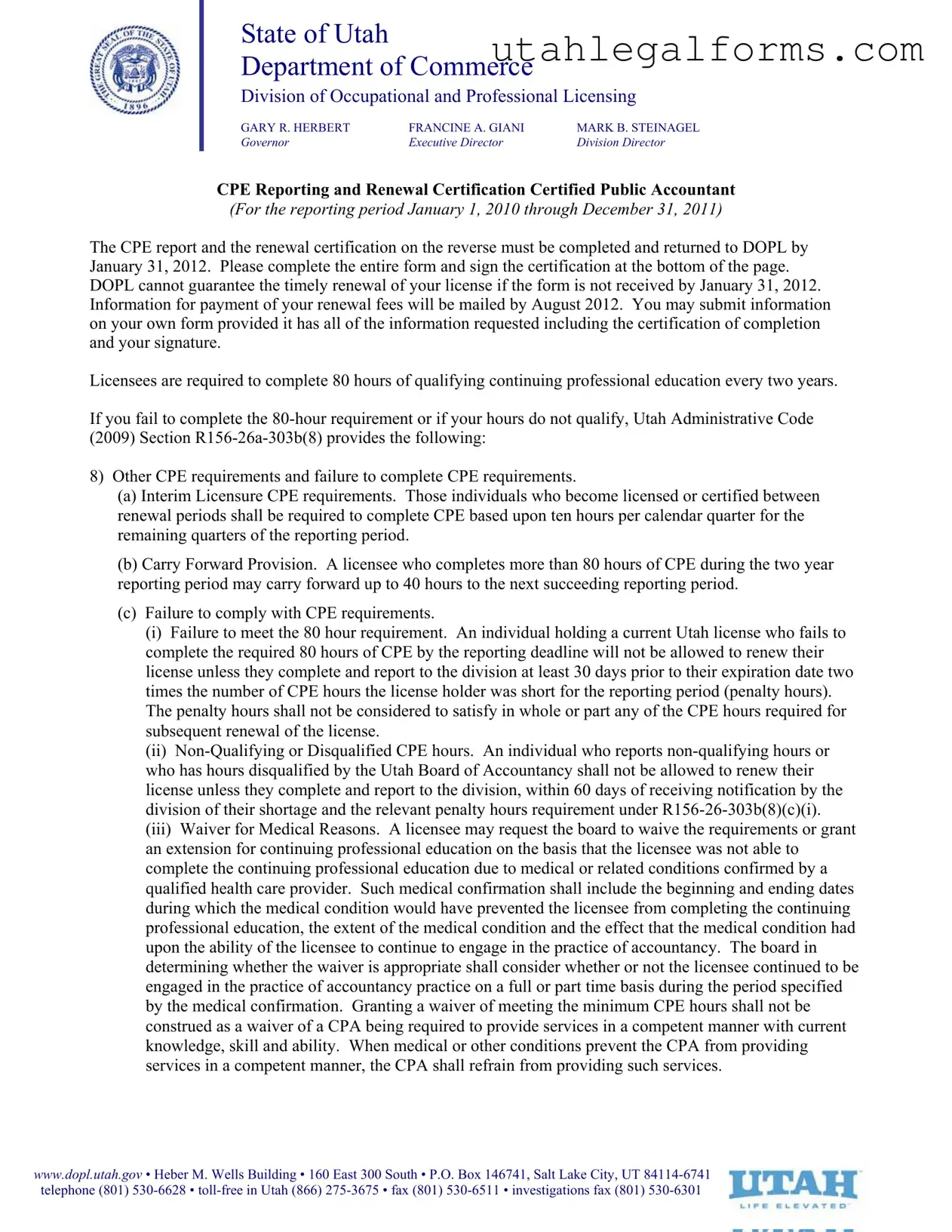Fill a Valid Utah Cpe Reporting Template
The Utah CPE Reporting Form is a crucial document for Certified Public Accountants (CPAs) in Utah, designed to report their continuing professional education (CPE) hours. This form must be completed and submitted to the Division of Occupational and Professional Licensing (DOPL) to ensure compliance with state requirements. Timely submission is essential to avoid penalties and ensure license renewal.
To fill out the form, please click the button below.
Access Utah Cpe Reporting Now
